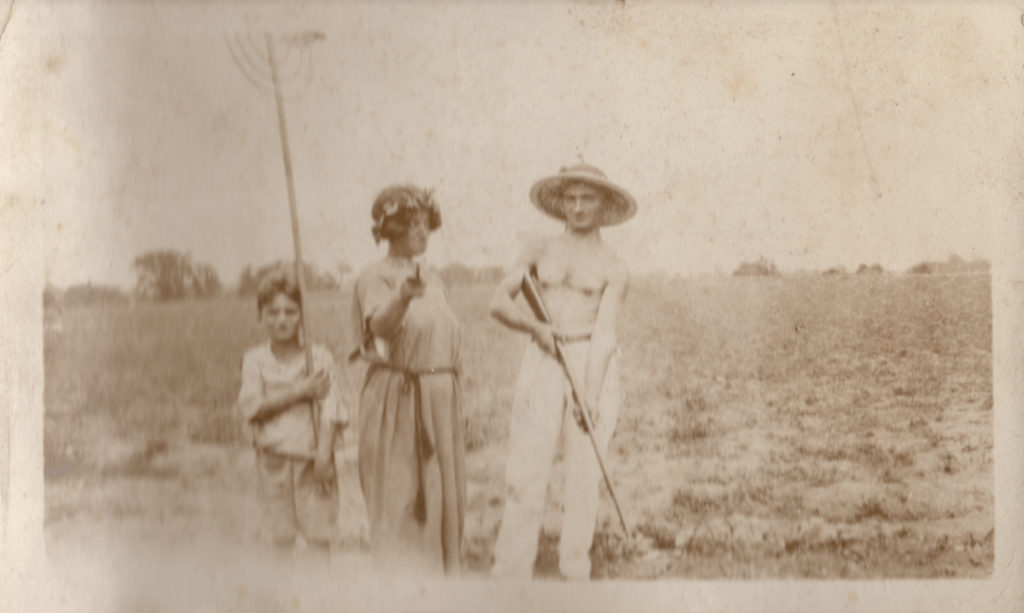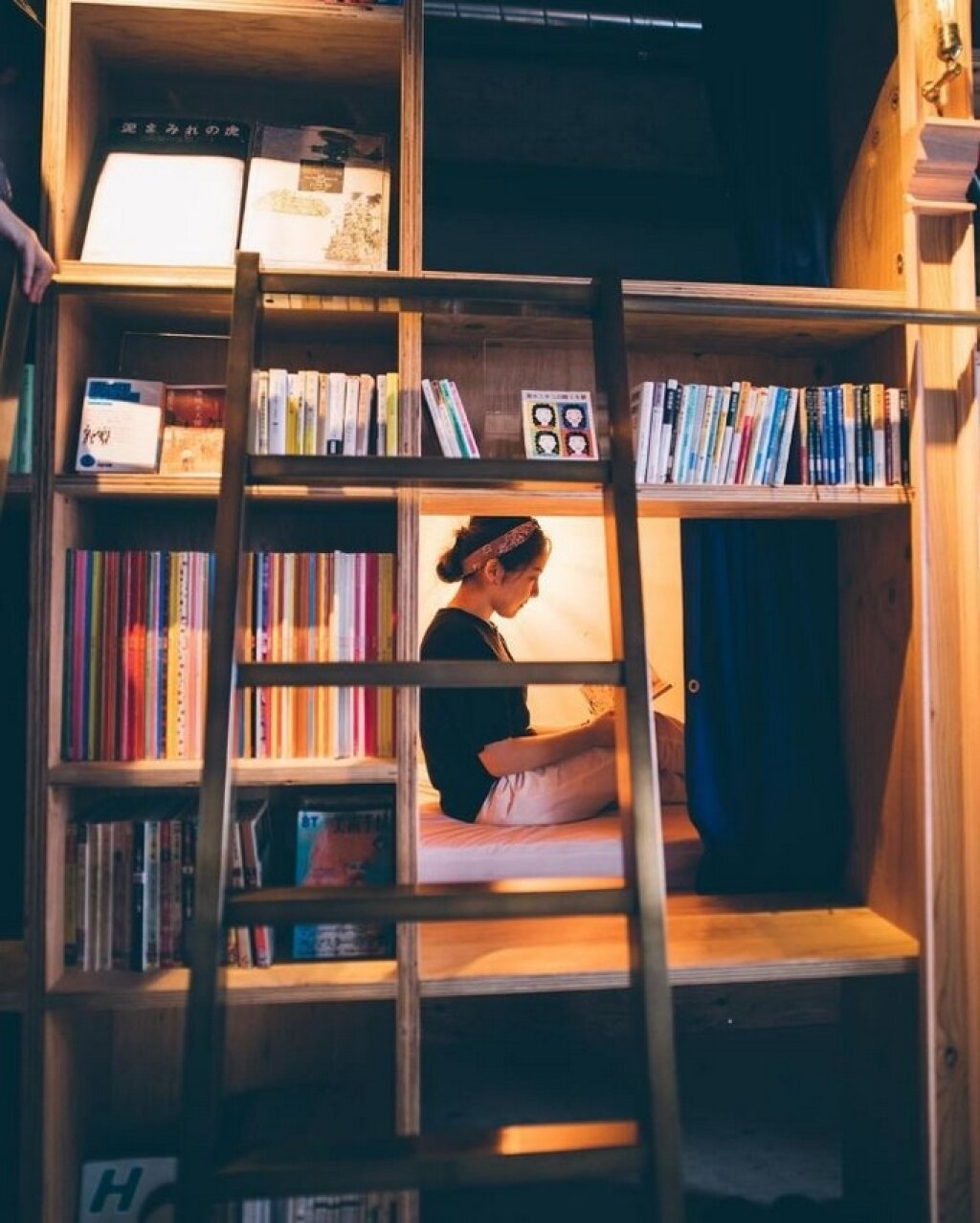Image courtesy of Special Collections and University Archives, Rutgers University
Susan Smith-Peter is Professor of History and Director of the History MA and Public History programs at the College of Staten Island/ City University of New York. Her book, Imagining Russian Regions: Subnational Identity and Civil Society in Nineteenth-Century Russia, was published with Brill in 2018.
A family stands in a field. The woman has flowers in her hair and a revolver in her hand. The man stands proudly with a rifle beside him, while their son stands beside his mother with a rake. The family name of the photo – guns for Lenin – suggests that this is a photo, and a family, that can only be understood in a transnational way. Family photograph albums, like the page we see here, are usually studied as part of local or national history and have often been described as "bourgeois." This album, held at Rutgers University Archives, tells a different story, of a radical family whose closest affiliations were with the internationalist aspirations of the Communist Party.
These are the Goldmans: Gusta, Lucifer, and Sam. Gusta and Sam were committed anarchists who left Russia for the United States before the Russian Revolution and converted to communism after it. They arrived in New York City, met, and began a family.
Gusta (born Gittel Levine) was a member an Italian-Jewish anarchist commune named the Brescia Group by the head of the New York Police Department’s Bomb Squad, Thomas Tunney, in his book, Throttled. After the Ludlow Massacre of striking miners in Colorado in 1914, anarchists sought to blow up John D. Rockefeller, Jr., who held a controlling interest in the mining company. Goldman family lore blames Gusta for the faulty fuse that led to the bomb destined for Rockefeller blowing up in a New York City apartment beforehand, on July 4, 1914. However, Gusta had left the commune due to becoming pregnant with Lucifer. She was not named as one of the conspirators by Charles Plunkett, the last surviving conspirator and later the chair of the biology department at Columbia, who was interviewed by Paul Avrich for Anarchist Voices.
Sam was born Samuel Holtzman in 1882 in a shtetl near Kiev. He was interviewed for a Home News article from February 28, 1937 about his house. It still stands in Piscataway, New Jersey, and features Soviet-style bas reliefs. Sam stated that he had survived a pogrom in Odessa in 1900, as well as the Kishinev pogrom of 1903, which was the bloodiest anti-semitic event prior to the Holocaust. In 1904, he left Odessa, where he had been an anarchist. The next year, the Odessa police arrested 20 members of anarcho-communist groups.
In the 1937 article, Goldman stated, “I've known so much hardship and suffering in the old Russia that I'm in favor of modern Russia.” His son, Leo, still has the rifle in the photo, which has “1917” scratched onto the stock. The Goldmans and other communists collected guns to send to the Bolsheviks during the Russian Civil War.
In the early days of their marriage, the Goldmans were part of the Ferrer Center in New York City, as were Emma Goldman (no relation), Alexander Berkman, Will Durant, John Sloan, Robert Henri, George Bellows, and Man Ray. In the aftermath of the attempted Rockefeller bombing, the Goldmans, along with several other families from the Center, moved out of the reach of the NYPD, establishing a colony in New Jersey. It was named the Stelton colony due to its location near the Stelton train station; many of the colonists took the train into the city to work in the garment district.
At the center of the colony was the Modern School, a progressive school based on the child-centered learning of Francisco Ferrer, a Spanish anarchist pedagogue and martyr. In addition, the Kropotkin Library served as the colony’s library as well as a meeting space for the anarchists in the colony, while the Communists met in private homes. Early colonist Bill Shatoff gave $10,000 to establish the school and later became Soviet Minister of Transportation and was shot in 1937. The colony’s newspapers noted the trips of neighbors to the USSR and included news from former colonists in Birobidzhan, the would-be Jewish homeland in Siberia.
The exterior of the Goldman House has a bas relief showing the peasant-worker union that echoes the famous Vera Mukhina statue of 1937. In addition, the porch support is a Constructivist collection of gears and propellers and the interior doors have cut outs of workers, both manual (with a pickax, etc.) and artistic (in a smock modeling clay), showing the equal importance of both. Sam’s house stands as a statement of physical labor – it was built partly from construction scraps found at his jobs as a union paperhanger and elsewhere– and the intellectual work of domestic Communism.
The house also has a bas relief of a stork, showing that it functioned as a nest. (Sam named it “Happy Landing” in the 1937 article.) And the Stelton radicals were protected by their houses. Colony leader Joseph Cohen noted that during the Red Scare of 1918-9, US Attorney General Mitchell Palmer had wanted to deport the colonists but “What saved us was the fact that we were all property owners, tied up with all kinds of obligations and entanglements.”
I became involved with the Friends of the Modern School in the early 2000s, when I read an article on the Goldman House in the Home News Tribune. For most of the 2000s and the early 2010s, the Friends, who are the children and sometimes grandchildren of the colonists, would have annual reunions at Rutgers University. The arguments of their anarchist and communist parents resounded again and I often felt that 1918 was not that far away. I knew that I was not the historian, as my work is in a different field. Now I understand that I was the witness.
It would be difficult to find a better-documented community than the Stelton colony. In the 1920s, the Modern School applied to the Garland Fund, which gave money for left-wing causes, and unusually open accounts of its communist influences can be found in the American Fund for Public Service Records at the Manuscript Division of the New York Public Library. The records of the Stelton cell of the Communist Party can be found at the CPUSA records at NYU. Amtorg, the Soviet-American trade organization, had a tractor training plot next to the colony and should have relevant material in its archive.
Rutgers University has a large Modern School Collection, which contains the voluminous publications, often artistically significant, of the school itself, as well as documentation of the reunions from the 1970s to the early 2010s, which were filmed and serve as a massive oral history archive.
The children of the Modern School wrote a collective memoir, published as Recollections from the Modern School Ferrer Colony, edited by Jon Thoreau Scott, who grew up in the colony and has been active in the Friends for years. Based on an earlier memoir by Victor Sacharoff, it also includes house-by-house memoirs. Rutgers archives also holds a manuscript of a complete Modern School primary source reader that Paul Avrich had compiled but was not able to publish before his death.
Although the colony ceased to exist in the early 1950s, possibly due to the investigation of neighboring Camp Kilmer during the Army-McCarthy hearings, its creation of a space linking the family and the transnational still intrigues. The field of transnational history would find much of interest in studying this family.



